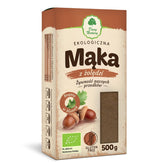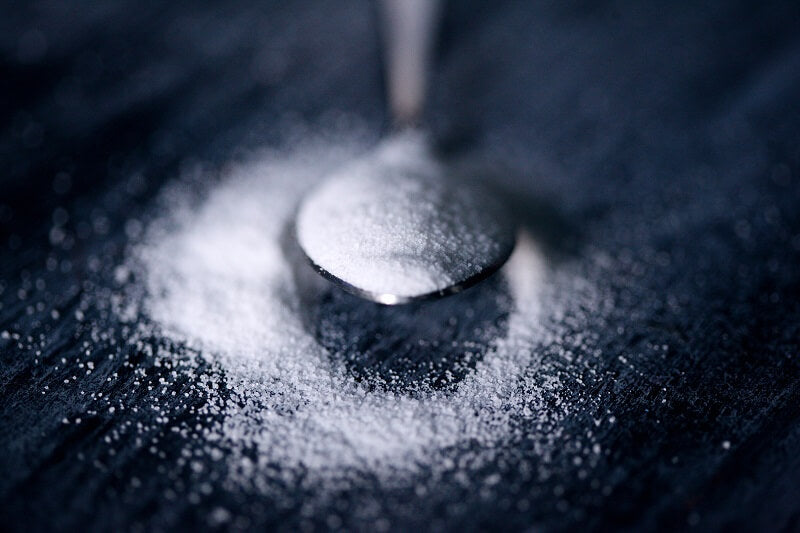Xylitol – Chinese or birch? Which should you use and why?
CONTENTS
- What exactly is birch xylitol?
- What's wrong with Chinese xylitol?
- Xylitol – Properties and Uses
- Xylitol – what are the side effects of its use?
- Which xylitol should I choose?
- Summary
The market and demand for various white sugar substitutes are constantly growing. It's therefore not surprising that more and more new sweeteners are being developed and their consumption is increasing. As with almost all products, price and quality are very important to buyers. Therefore, we are seeing the emergence of substitutes for the sweeteners themselves. They are usually much cheaper than the originals—but are they healthier? In this article, we will attempt to compare the original xylitol. Birch, for example, in China. We invite you to read.
What exactly is birch xylitol?
Birch xylitol is sometimes called Finnish xylitol. This is because it was originally obtained from the bark of Finnish birch trees. Interestingly, due to the shortage of traditional sugar in this country, its production began during World War II. It is a substance of natural origin and it should be noted that it is found not only in birch bark. We find it in strawberries, blueberries, raspberries and pears. However, it should be borne in mind that the content in these fruits is much lower than that of birch bark. Xylitol itself belongs to the family of sugar alcohols, or polyols. These substances are characterized by a calorific value about 40% lower than that of sucrose, but they also practically do not increase blood sugar levels. Due to these properties, they are perfect as a substitute for white sugar. They are also recommended for diabetics. Birch xylitol is formed through many chemical or biochemical processes. The production process involves the hydrogenation of xylose, a component of plant cell walls that is found in large quantities in birch bark. This process is relatively expensive and energy-intensive, but the final product is of high quality. This is primarily due to the strict standards in place in Europe and the European Union itself. This ensures that the production process is strictly controlled from start to finish. Yes, it makes the xylitol produced this way relatively expensive, but we can take full advantage of its high quality.
What's wrong with Chinese xylitol?
As already mentioned, there are two methods for producing xylitol: chemical and biochemical. The second method is significantly cheaper and requires significantly less energy. It involves the use of microorganisms, specifically fungi of the genus Candida. They ferment both fruit and agricultural waste into pure xylitol. For this purpose, you can use practically anything, from corn, soybean pods, sugarcane bagasse, to banana peels. Theoretically, this is an environmentally friendly process, as the waste used in this process would otherwise likely end up in the trash. However, let's focus on xylitol from China. Birch trees are practically nonexistent in this country, and therefore, local xylitol contains very little wood mass. Corn, which is widely grown in China, is used to produce this sweetener. As with soybeans, most of this is genetically modified corn, whose production is primarily in China. Furthermore, the process used to produce local xylitol is very harmful to the natural environment. In addition, it is of lower quality than traditional xylitol, which is extracted from birch bark. The production process itself is also questionable, and there have been cases of yeast in the final product. Therefore, people suffering from fungal infections should be especially careful. It's also worth noting that product quality standards in the country are much lower and less respected than in Europe. The combination of all these properties naturally makes Chinese xylitol much more affordable than birch.
Xylitol – Properties and Uses
As a chemical compound, xylitol is an excellent substitute for white sugar. One gram of xylitol contains about 2.4 kcal, and one gram of sucrose about 4 kcal. Its glycemic index is also several times lower than that of white sugar, at 8. As a result, it practically doesn't raise blood sugar levels at all. Furthermore, its metabolism is almost entirely independent of insulin, so it doesn't cause outbreaks. Although it's primarily used as a natural sweetener, it has many other health-promoting properties. It can have a positive effect on the health of our mouths and teeth. It restores the optimal pH of saliva, thus reducing the stress on teeth caused by various acids that can damage them. It can also inhibit the growth of microorganisms in the oral cavity. This is due to its antibacterial properties, but it's not as good for them as white sugar. It can also increase bone density and enhance calcium absorption, thereby reducing the risk of osteoporosis in the future. It's also worth mentioning that xylitol can support the body's natural immunity. Unlike sucrose, it has an alkaline reaction. This restores the body's acid-base balance and inhibits the development of many pathogenic microorganisms.
Xylitol – what are the side effects of its use?
Interestingly, there is no recommended daily dose of xylitol. It is a very safe substance, but this does not mean that an overdose is impossible. Especially at the beginning of use, the likelihood of several side effects increases. These include diarrhea, abdominal pain, cramps, or excessive gas accumulation in the intestines. However, these symptoms subside fairly quickly, and the body gradually adapts to the increasing intake of xylitol. Also, keep in mind that for products with a polyol content of more than 10% by weight, the manufacturer is required to provide information about the possible laxative effect.
Which xylitol should I choose?
Both birch xylitol and Chinese xylitol are essentially the same chemical compound. However, if good quality and the assurance that the product and its production are strictly controlled are important to us, it's worth choosing birch xylitol. In addition, it has many other health-promoting properties and is more environmentally friendly to produce. Cleanliness is also an important element. There is a very low risk of other chemicals being present in it. This is due to the production process itself. Naturally, the price of such a product is higher than that of its Chinese counterpart. The taste is also in favor of Finnish xylitol. Although the chemical compounds are the same, the raw material used in production is important. When deciding to replace white sugar with a sweetener, it's best to simply choose a product that adds something else to our diet besides its sweet taste. However, that doesn't mean we should demonize Chinese xylitol. In this case, there is a high risk that it is of poor quality and may contain substances other than xylitol itself.
Summary
We're extremely pleased that society is increasingly turning to natural sweeteners and replacing white sugar with them. It's important to remember that if we decide to make such a change, we, and our bodies, need to gradually get used to it. Therefore, it's best to start with small doses of xylitol. and gradually increase it over time. Also, keep in mind that the price of the product isn't everything, and sometimes it's worth paying a premium to fully enjoy the health-promoting properties of the sweetener. This not only helps us sleep better but also has a positive impact on our health in the long run.
THE PUBLISHER'S CHOICE
Dried plums 1 kg BIOGO
- €7,01
- €7,01
- Unit price
- / per
Dried White Mulberries 500 g ORGANIC
- €5,84
- €5,84
- Unit price
- / per
Almonds 1 kg BIOGO
- €11,69
- €11,69
- Unit price
- / per
Cranberries sweetened with apple juice organic 1 kg BIOGO
- €16,37
- €16,37
- Unit price
- / per
Dried dates 1 kg BIOGO
- €4,21
- €4,21
- Unit price
- / per
Unpeeled buckwheat groats 1 kg BIOGO
- €2,81
- €2,81
- Unit price
- / per
Walnuts 800 g BIOGO
- €8,65
- €8,65
- Unit price
- / per
Peeled sunflower seeds 1 kg BIOGO
- €3,04
- €3,04
- Unit price
- / per
PULLED ORGANIC SUNFLOWER SEEDS 1 KG BIOGO
- €4,44
- €4,44
- Unit price
- / per












































































































































